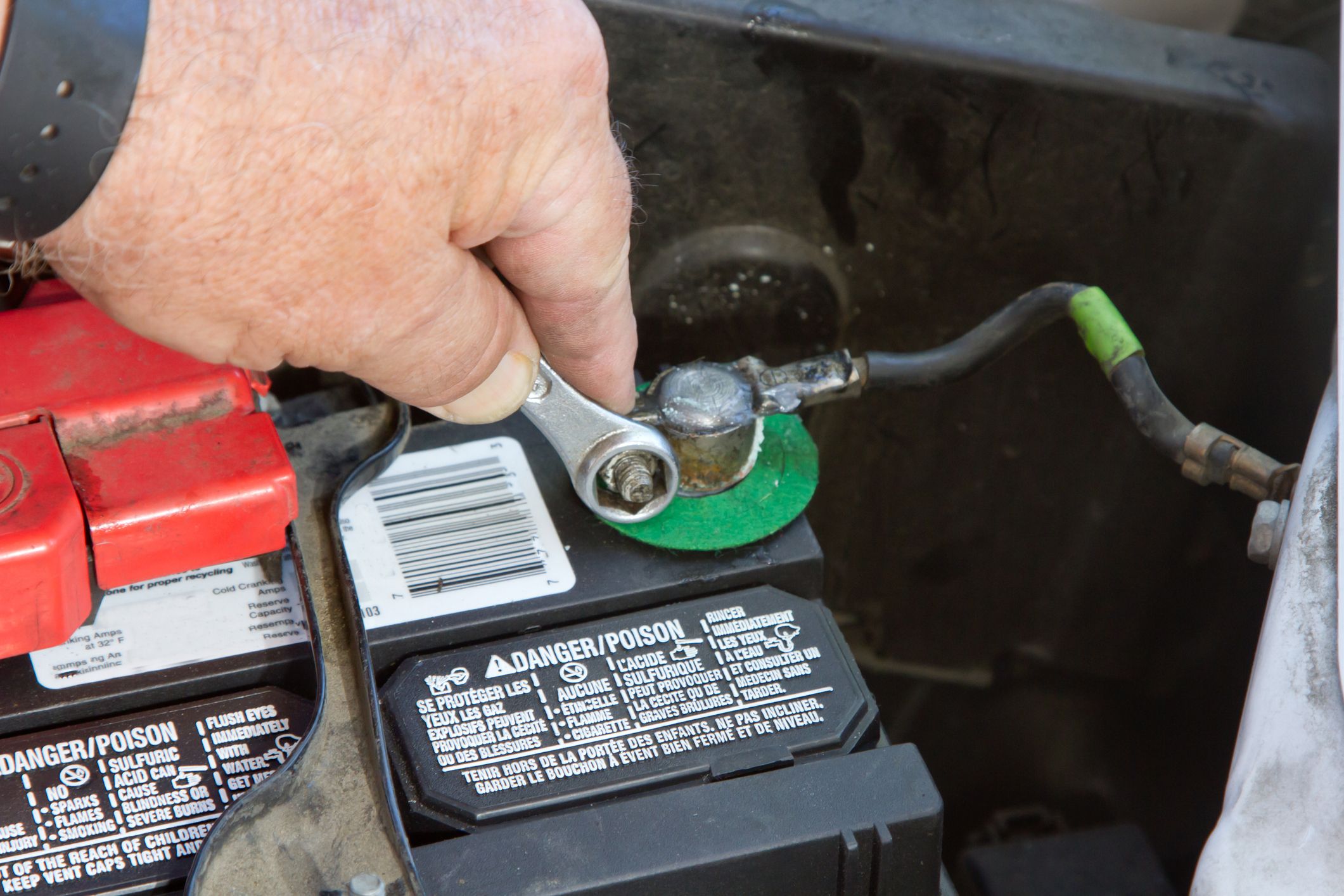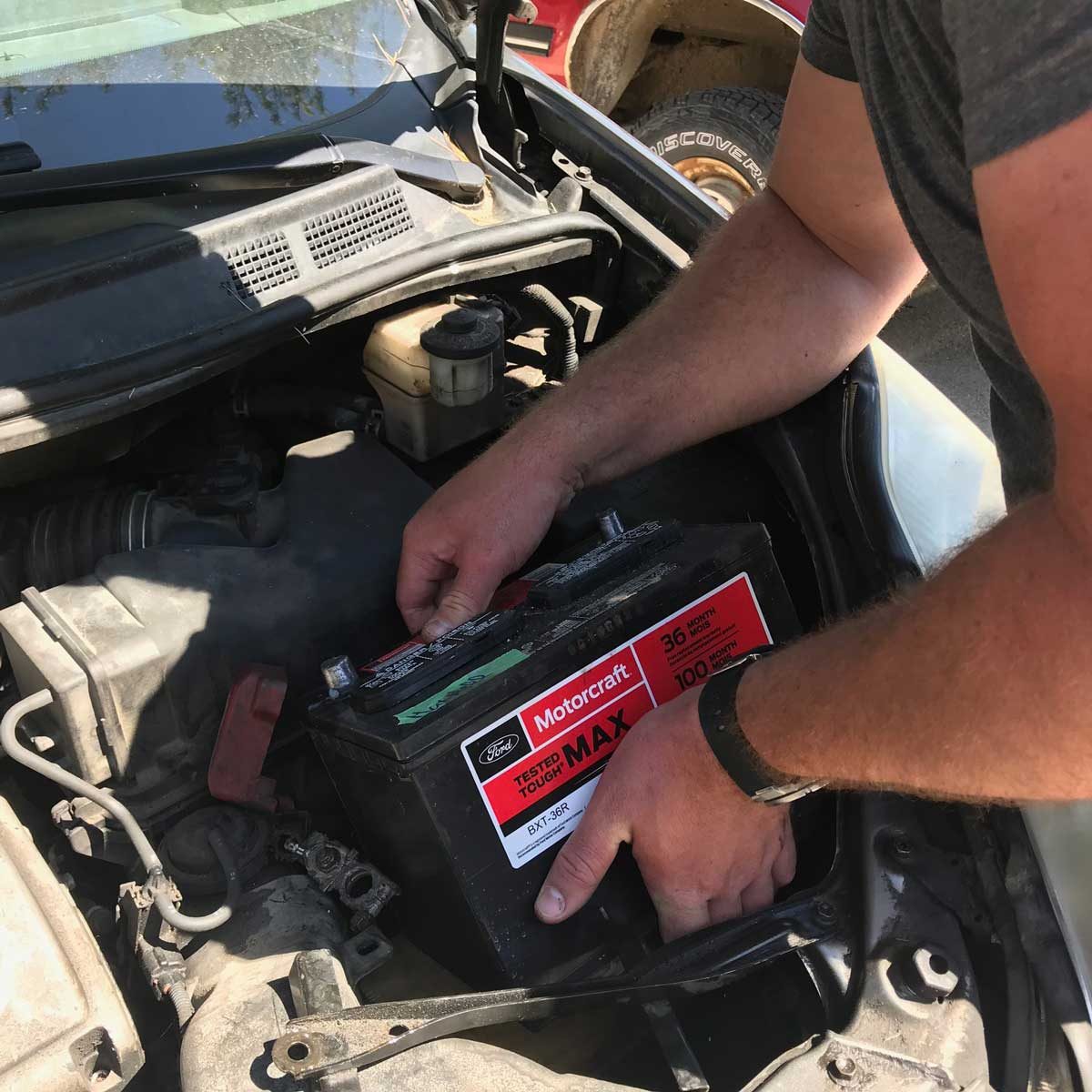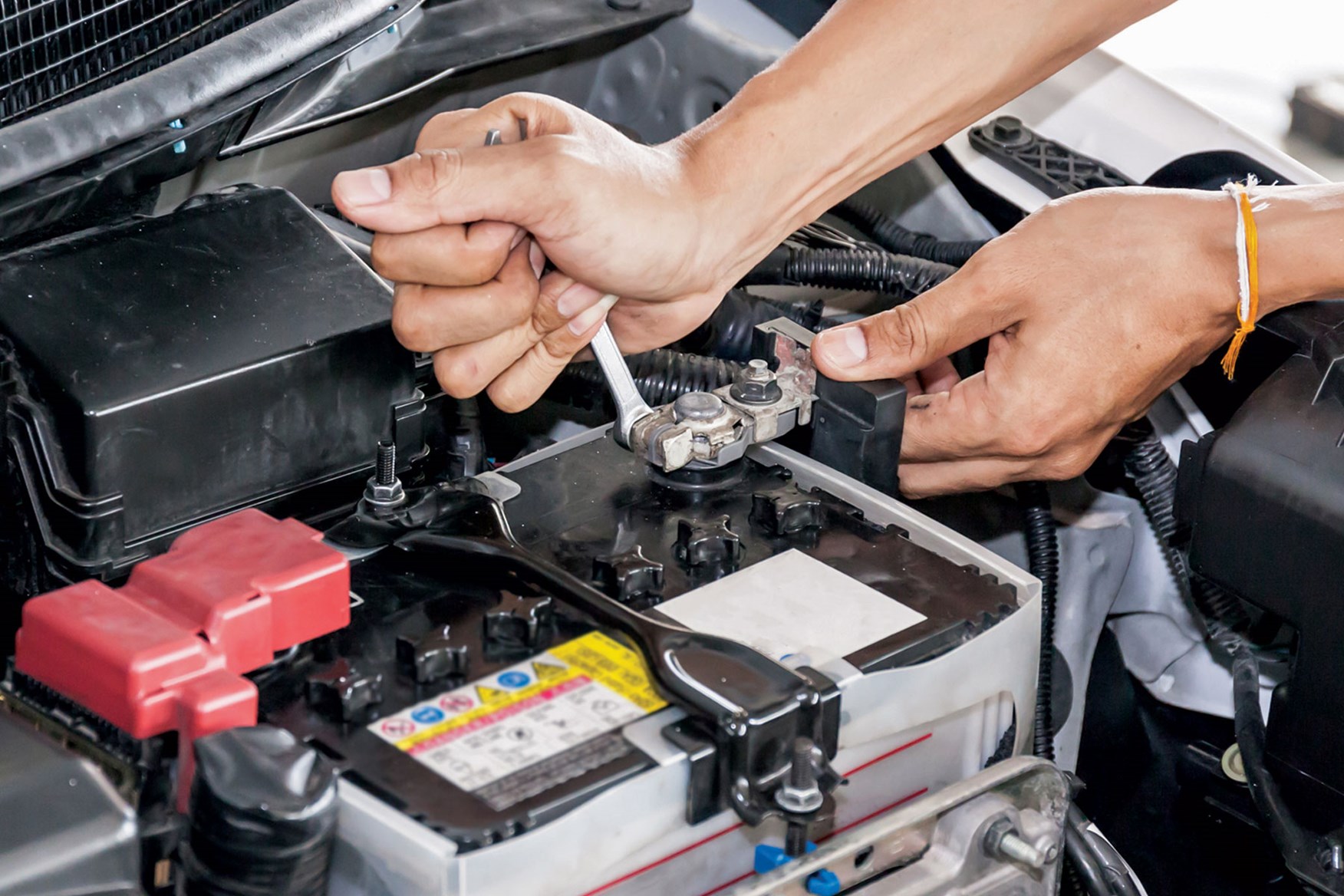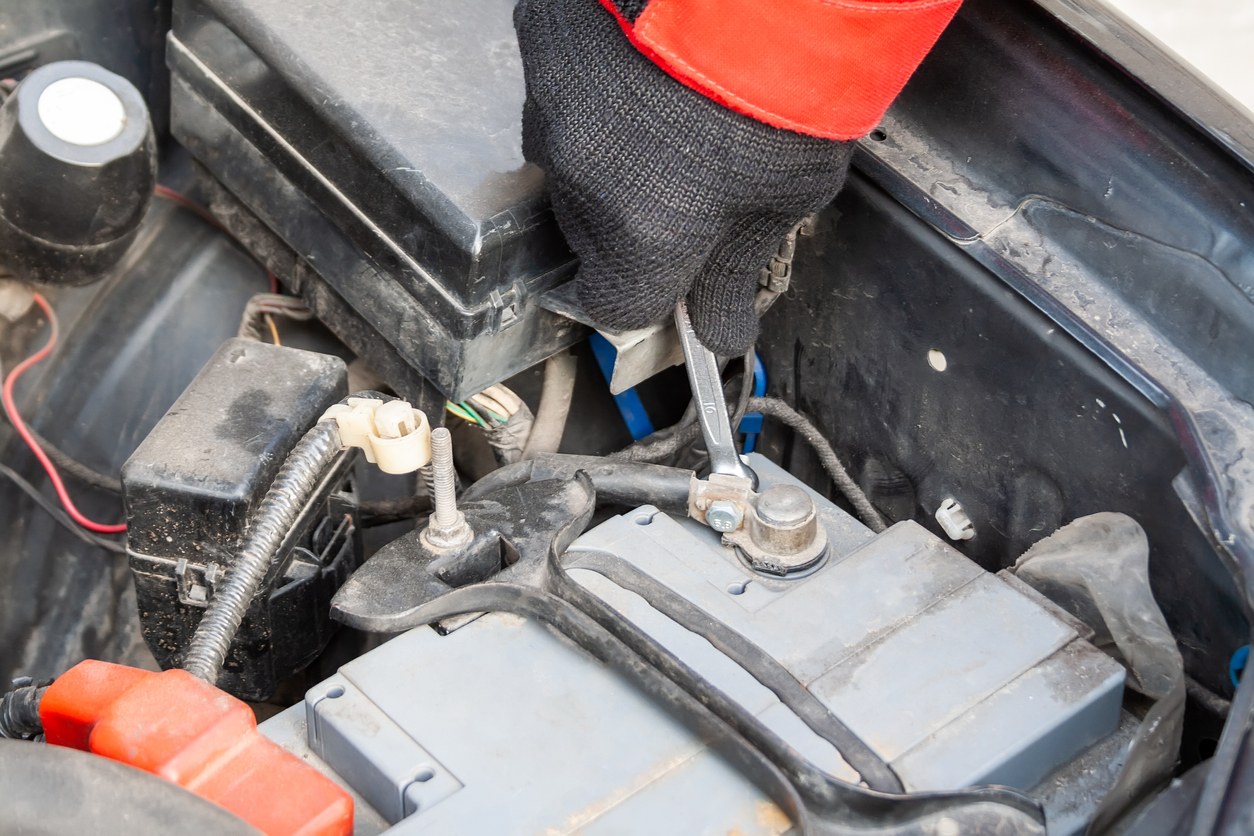How To Disconnect A Car Battery?
How To Disconnect Car Battery?
Disconnecting a car battery is a straightforward task that requires careful attention to safety. Follow these detailed steps to ensure you disconnect your car battery safely and correctly:
Step 1: Gather Your Tools
Before you begin, make sure you have the necessary tools:
- A wrench or a socket set (usually 10mm or 13mm, depending on your car)
- Safety gloves
- Safety glasses or goggles
Step 2: Locate Your Battery
Open your vehicle’s hood and locate the battery. Most car batteries are found in the engine compartment, though in some cars, the battery may be located in the trunk or under a seat.
Step 3: Prepare for Safety

- Ensure the car is turned off. Remove the keys from the ignition to avoid any electrical mishaps.
- Wear your safety gloves and glasses to protect yourself from any sparks or corrosion.
Step 4: Identify Battery Terminals
Look at the battery and identify the positive (+) and negative (-) terminals. The positive terminal is usually marked with a plus sign and might have a red cover, while the negative terminal typically has a minus sign and may be covered in black.
Step 5: Disconnect the Negative Terminal
Always start with the negative terminal to minimize the risk of a short circuit. Using your wrench, loosen the nut or bolt on the negative terminal. Once loose, carefully disconnect the negative cable and secure it away from the battery. Ensure that it does not come into contact with any metal parts of the car.
Step 6: Disconnect the Positive Terminal
After the negative terminal has been safely disconnected, repeat the process with the positive terminal. Loosen the nut or bolt and remove the positive cable. Be particularly careful to ensure that the positive cable does not touch any metal or the negative cable.
Step 7: Remove the Battery (if needed)
If you need to remove the battery from the vehicle, make sure both terminals are disconnected. Some batteries may have a securing bracket or clamp that needs to be removed. Use your wrench or socket set to remove these, then carefully lift the battery out of the car. Remember, car batteries can be heavy, so maintain a good grip and lift with your legs, not your back.
Step 8: Completing the Task
- If you’re simply disconnecting the battery for safety while working on the car, ensure that the cables are secured away from the battery and any metal.
- If you’ve removed the battery for replacement, you can now proceed with installing the new one by reversing these steps.
Risks and Precautions When Disconnecting a Car Battery
Disconnecting a car battery, while a relatively simple procedure, involves certain risks that must be managed with appropriate precautions. Here’s an overview of the key risks and the necessary precautions to take:

Risks
-
Electrical Shocks and Sparks: When disconnecting a battery, there’s a risk of electrical shock or sparks, which can occur if the tools or battery terminals come into contact with metal parts of the car while the battery is still connected.
-
Short Circuits: Accidentally touching the positive terminal to the car’s metal body can create a short circuit, leading to sparks, damage to the electrical system, or even a fire.
-
Battery Acid: Car batteries contain sulfuric acid, which is highly corrosive. If a battery is old or damaged, it could leak acid, posing a risk of burns and environmental damage.
-
Explosive Gases: Batteries emit hydrogen gas, especially when they are charging. This gas is highly flammable and can be explosive when exposed to sparks or open flames.
Precautions
-
Wear Protective Gear: Always wear gloves and safety goggles to protect your hands and eyes from sparks, acid, and debris. Protective clothing can also prevent acid from reaching your skin.
-
Use Proper Tools: Ensure that you use non-conductive tools or tools with insulated handles to avoid creating a spark. A wrench or socket set specifically for automotive use is ideal.
-
Disconnect the Negative Terminal First: This minimizes the risk of short circuits. By disconnecting the negative (ground) side of the battery first, you reduce the likelihood of completing an electrical circuit that could cause a spark.
-
Secure the Battery Cables: Once removed, ensure that the battery cables are secured away from metal parts and each other. This prevents them from accidentally touching the battery posts or the vehicle frame, which could cause a short.
-
Keep Flames and Sparks Away: Make sure there is no smoking, open flames, or work that could produce sparks near the battery area. Always work in a well-ventilated space to disperse any potentially explosive gases.
-
Check for Damage: Before proceeding with disconnection, inspect the battery for any signs of damage or leaking. If the battery appears swollen, cracked, or is leaking any fluid, handle it with extreme care and consider seeking professional help.
-
Ensure Vehicle is Off: Make sure the vehicle’s engine is off and the keys are removed from the ignition. This prevents any electrical draw while the battery is being disconnected.
-
Keep a Baking Soda Solution Handy: In case of acid spills, have a solution of baking soda and water ready. Baking soda neutralizes battery acid, helping to manage spills safely.
Will A Car Battery Go Flat If Left Disconnected?
Yes, a car battery will eventually go flat if left disconnected for an extended period because of a phenomenon called self-discharge. Even when disconnected, batteries lose a small amount of charge over time.

Here’s a breakdown of what to consider:
-
Rate of Discharge: The rate at which a disconnected battery loses charge depends on several factors, including age, temperature, and battery type. In general, a healthy battery loses charge at a rate of around 3-5% per month.
-
Length of Time Disconnected: The longer a battery is disconnected, the more it will discharge. If you only disconnect it for a few days, it likely won’t lose a significant amount of charge. However, after several weeks or months, it might be too weak to start your car and may need to be recharged or even replaced.
-
Battery Condition: Older or damaged batteries will self-discharge at a faster rate than newer batteries in good condition.
Therefore, while disconnecting the battery is a good way to prevent parasitic drain (small electrical currents that continue to draw power even when the car is off), it’s not a long-term storage solution.
Frequently Asked Questions
What safety measures should I take when changing a car battery?
Before replacing a car battery, ensure you’ve turned off the engine, identified the battery terminals correctly, and are wearing protective gear like gloves and safety goggles. This is important to avoid any mishaps and protect yourself from potential harm.
Can I charge my car battery without disconnecting it?
Yes, a car battery can be charged without disconnecting it provided it’s done correctly. This process involves correctly identifying the battery terminals to avoid any mishaps.
What is the correct way to reconnect my car battery?
When reconnecting your car battery, ensure you reset the car’s clock, re-enter the security codes for your stereo system, and verify that your battery is securely fastened. Also, use a wire brush to clean the battery cable connectors.
What could happen if I leave my car battery disconnected for a long time?
Leaving your car battery disconnected for extended periods can cause irreversible damage due to slow discharging. Using a battery maintainer or charger can prevent your battery from becoming too weak to jump-start your vehicle.

Hi! I’m Larry Gibbs, studying mechanical engineering with a focus on cars. I really love Ferraris and write blog posts about the latest car stuff. When not studying or blogging, I’m usually on a road trip exploring new places. I also enjoy playing football and watching movies. Life’s an adventure, and I’m all about enjoying the ride!







